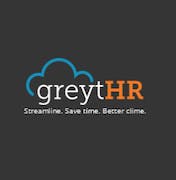Looking for a reliable leave management system? Our comprehensive buyer's guide features useful tips to help you make an informed decision. Find your perfect solution today!
In the modern workplace, managing time off requests can be an overwhelming and disorganized task. HR personnel and managers are often inundated with leave requests, which can lead to errors, confusion, and disgruntled employees for missed or double-booked vacation or sick days. However, with the right leave management system, managing time off requests can be efficient, streamlined, and stress-free. A reliable leave management software can help businesses stay organized, reduce errors, and provide better employee satisfaction by automating the application process, tracking available leaves in real-time, and adjusting schedules accordingly. In this buyer's guide, we'll explore the critical features, benefits, and considerations of choosing this tool.
What is a leave management system?
A leave management system (LMS) is a software designed to simplify the process of leave tracking, management, and approval within an organization. It enables human resource managers to efficiently manage employee absence, monitor leave trends, and maintain compliance with company policies and federal regulations. With LMS, the burdensome, time-consuming manual tracking process, which involves the manual filling of forms, is replaced with a seamless automated process.
Leave management systems have become increasingly popular in modern organizations due to their ability to streamline HR processes, saving time and resources while also increasing operational efficiency. Different businesses and organizations utilize such solutions differently to meet their specific needs. Organizations of all sizes, from small businesses to large corporations, across industries such as healthcare, manufacturing, retail, and education also use this technology. Here are some of its common use cases:
- Record keeping: It helps human resource managers to maintain accurate records of employee's leaves. With all the data stored in one centralized location, HR managers can easily retrieve it when needed and keep track of an employee's leave history.
- Attendance tracking: It also provides accurate and up-to-date attendance records, enabling managers and supervisors to have a real-time view of who is available to work and who is not. This can help businesses avoid scheduling conflicts or maintain productivity during peak periods.
- Compliance: By implementing an LMS, businesses can easily comply with laws and regulations, including FMLA and other leave entitlements.
- Notifications: An LMS tool can provide automated email notifications that remind employees of their expected return to work date, as well as pending leave requests.
What are the benefits of implementing a leave management solution?
Managing employee absences can be a challenging task for any organization. From planned vacations to unexpected illnesses or emergency situations, employee absences can significantly impact the productivity and operations of any business. An LMS is an automated tool that enables organizations to efficiently manage employee absences and ensure smooth operations. In this section, we will discuss why it is important to have one and what benefits it can offer to businesses. But the core principle of the leave management system is not in avoiding problems, but in bringing benefits to the company. In fact, there are at least 13 benefits of implementing the leave management system in the company but we will highlight just a few.
- Enhanced efficiency
An LMS automates the process of managing employee absences and eliminates the need for manual tracking and record-keeping. This results in significant time savings, increased accuracy, and reduced administrative burden for HR teams.
2. Increased productivity
By providing a centralized platform for requesting and approving employee leave requests, an LMS minimizes communication gaps and helps ensure prompt responses. This enables employees to plan their absences in advance, minimizing the impact on day-to-day business operations.
3. Improved compliance
An LMS helps ensure that organizations comply with legal and regulatory requirements related to employee leaves. It simplifies the process of tracking employee leave entitlements and ensures timely reporting to relevant authorities.
4. Transparent communication
An LMS provides easy access to information related to employee absences for both employees and managers. This improves transparency and enables better communication between HR teams, managers, and employees.
5. Better resource allocation
By providing real-time information on employee leaves and absences, an LMS enables organizations to make better decisions regarding resource allocation. It helps businesses manage their staffing needs efficiently and ensure that they have enough resources to meet their business objectives. - Employee satisfaction
Simplified leave request processes and clear communication about leave policies improve employee morale. Fair and transparent leave management fosters a positive workplace culture.
An LMS is a critical tool for any organization looking to efficiently manage employee absences and ensure smooth operations. By offering enhanced efficiency, increased productivity, improved compliance, transparent communication, and better resource allocation, an LMS can significantly benefit businesses of all sizes. Its automated features allow HR teams to focus on critical tasks, and enable organizations to operate at peak efficiency, even during times of high absenteeism.
10 key features of a leave management solution
Here are 10 common features of leave management technology that can benefit both employees and employers.
- Time-off tracking: It provides a centralized platform to track time off requests and approvals for vacation days, sick leave, and other types of time off.
- Automated workflows: With workflows in place, the program can route requests to the appropriate manager or supervisor, streamlining the process and eliminating confusion.
- Leave accruals: The software tracks and calculates employee leave accruals, ensuring employees get the appropriate amount of time off and reducing the risk of errors.
- Reports and analytics: Administrators can generate reports and use data analytics to identify trends regarding employee absences and time off, helping to make improvements where necessary.
- Customizable leave policies: Companies can create their unique time off policies and implement them into the system to ensure compliance with both local and federal regulations.
- Employee self-service: Employees can easily access the application to check their entitlements, request leave, and view their leave balances, leading to more accurate and transparent communication.
- Mobile app capability: With mobile app capabilities, employees can easily request time off and approve requests while on the go, making the process much more efficient.
- Calendar syncing: A leave management platform can connect to company calendars to show employee leave schedules alongside other company events, streamlining scheduling and reducing conflicts.
- Integration with payroll systems: Leave management systems can integrate with payroll apps, allowing leave requests and approval processes to flow seamlessly with payroll cycles. Research has revealed that a poor leave management process can cost organizations 20.9% to 22.1% of their payroll.
- Email notifications: This tool can send automatic email notifications to provide updates on the status of requests. This feature helps to ensure transparency and effective communication between employees and managers.
Things to consider when adopting a leave management tool
As businesses around the world continue to embrace remote work, it has become increasingly important to manage employee leave effectively. Let us highlight some key factors to consider when purchasing a leave management app.
1. Ease of use: When evaluating an LMS, one of the most important factors to consider is how easy it is to use. The software should be intuitive and user-friendly, allowing HR managers and employees to manage leave with ease. It should also be accessible from any device, including smartphones and tablets.
2. Customization: Every business has unique leave policies and procedures. So, it's essential to choose a solution that offers customization options. It should allow you to configure leave types, minimum and maximum leave durations, accrual rates, and more.
3. Integration: Your LMS should seamlessly integrate with your existing HR and payroll systems. This will eliminate the need for manual data entry and ensure accuracy across all solutions.
4. Data security: The data stored in your leave program is highly sensitive and confidential. Therefore, it should be stored securely in compliance with data privacy regulations like GDPR and CCPA.
5. Analytics and reporting: An effective tool should offer real-time analytics and reporting that help you make data-driven decisions. It should track critical metrics like employee attendance, leave usage trends, and the cost of leave, among others.
6. Support and maintenance: After the purchase, you'll need ongoing support to ensure your LMS is running optimally. Look for a vendor that offers comprehensive support, maintenance, and training services.
An effective LMS can save HR managers time, reduce expenses, and improve employee satisfaction. To get the most value out of your investment, consider these key factors when purchasing one.
Market trends for leave management system
Leave management systems have become a sought-after technology in recent years, with businesses recognizing its value in optimizing employee performance and maintaining a healthy work-life balance. As we move forward into 2024 and beyond, it's essential to be aware of this solution's latest trends in that offer greater benefits to businesses and their employees.
One of the biggest trends we're seeing is the integration of AI-powered chatbots, which enable employees to request leave or receive information about their time off quickly and efficiently. Another trend is the incorporation of predictive analytics, which allows businesses to anticipate and mitigate leave-related issues before they occur.
Additionally, many companies are adopting cloud-based leave management systems, making it easier to access leave records and simplifying the process of approval. 56% of organizations are looking to adopt cloud-based leave management software.
Mobile optimization is also an important trend to keep in mind. With more employees working remotely, HR managers and executives need to have access to leave management systems beyond their desktops. Mobile optimization allows for easy access to leave records, making it simpler to approve, request, and manage employee leave requests. Lastly, the shift towards self-service platforms in leave management programs results in more autonomy for employees, reducing the workload on HR managers, and improving efficiency.
Conclusion
In a nutshell, effective leave management is essential for boosting employee satisfaction and operational efficiency. By adopting a leave management system, organizations can enhance productivity, reduce absenteeism, and create a positive work environment. This software provides transparency and fairness for employees and offer managers valuable insights into leave patterns. With continuous advancements, LMS will evolve, offering more features and integrations. Forward-thinking businesses should embrace this technology to handle workforce management challenges and support employee well-being. Automating leave management is crucial for any organization aiming to improve efficiency and harmony in the workplace.









